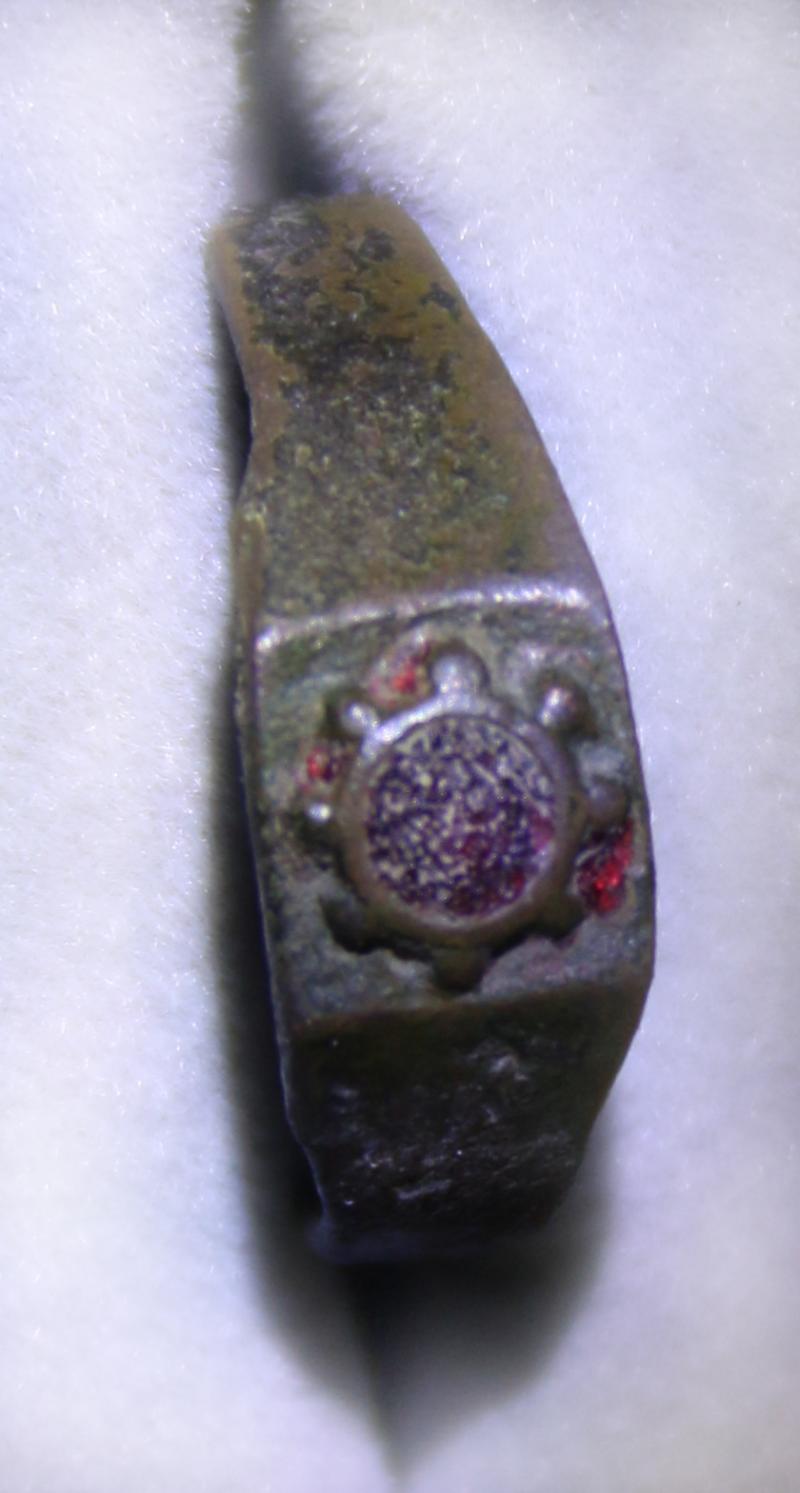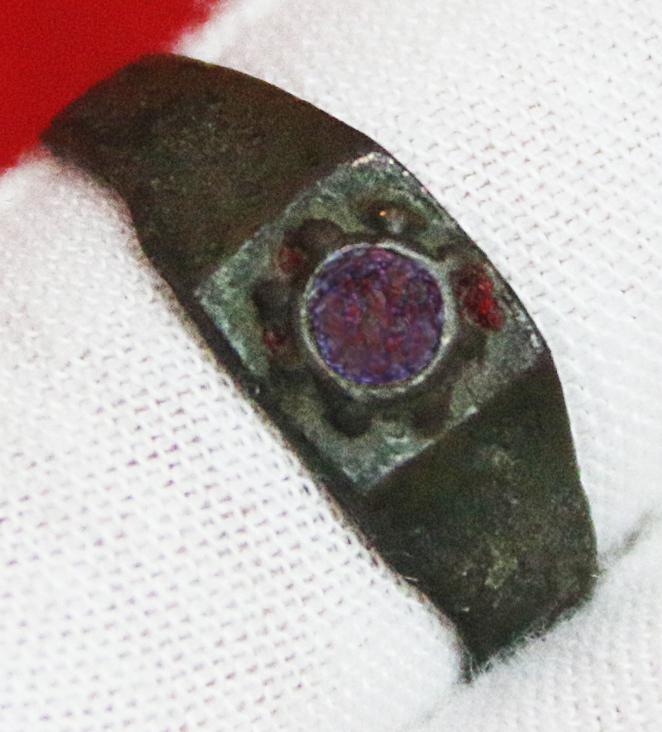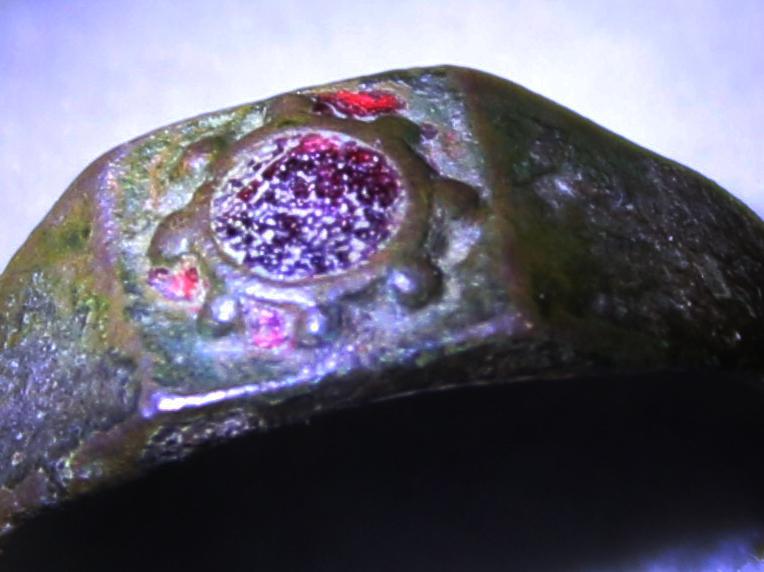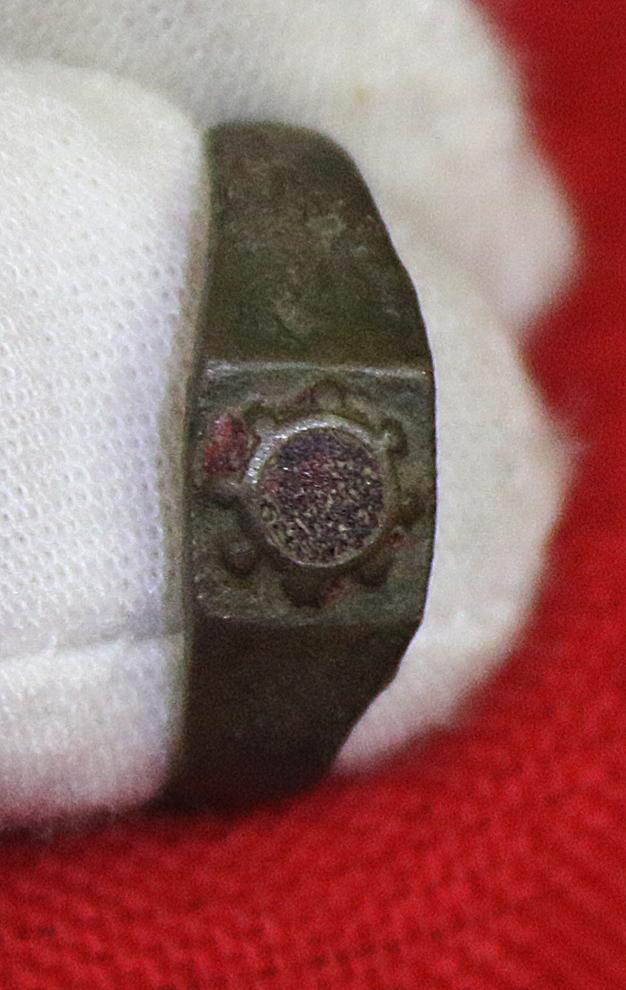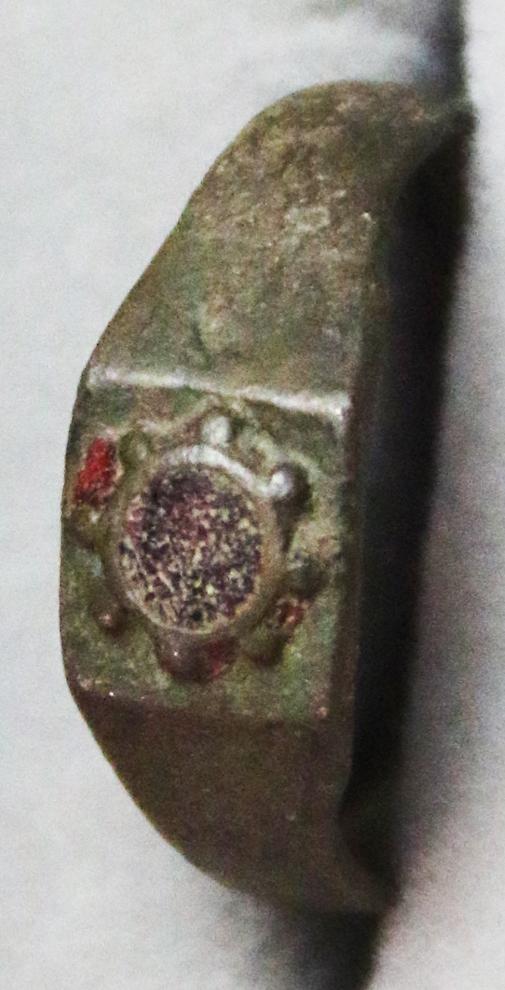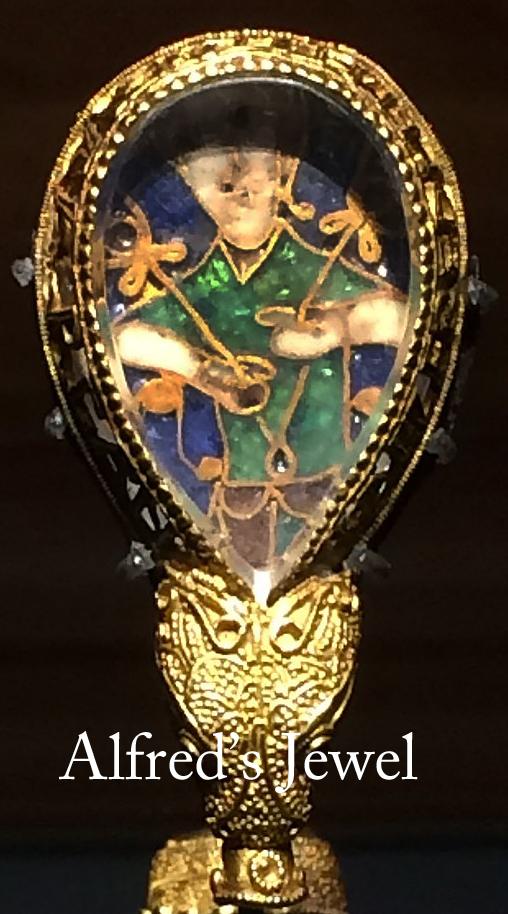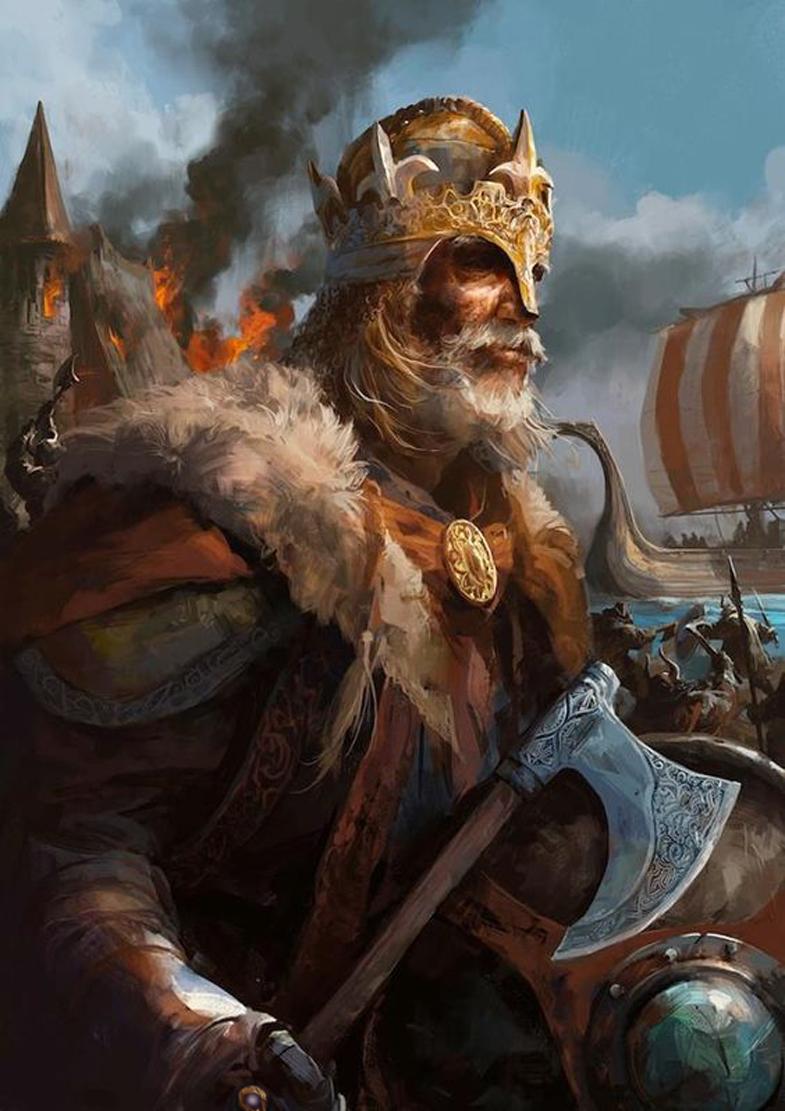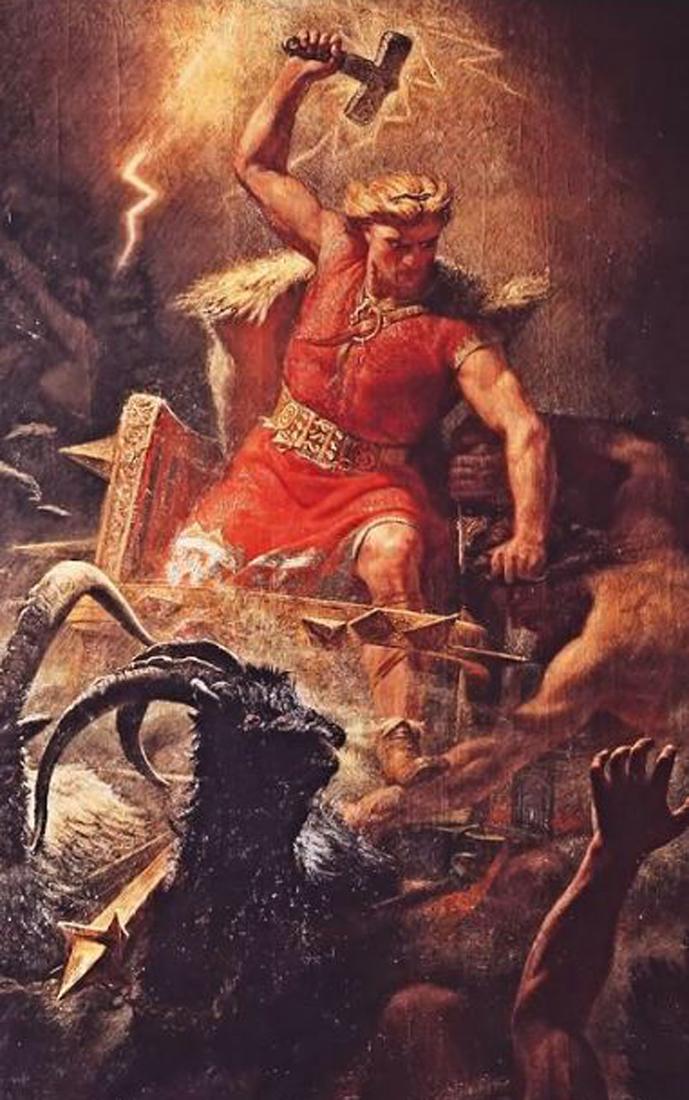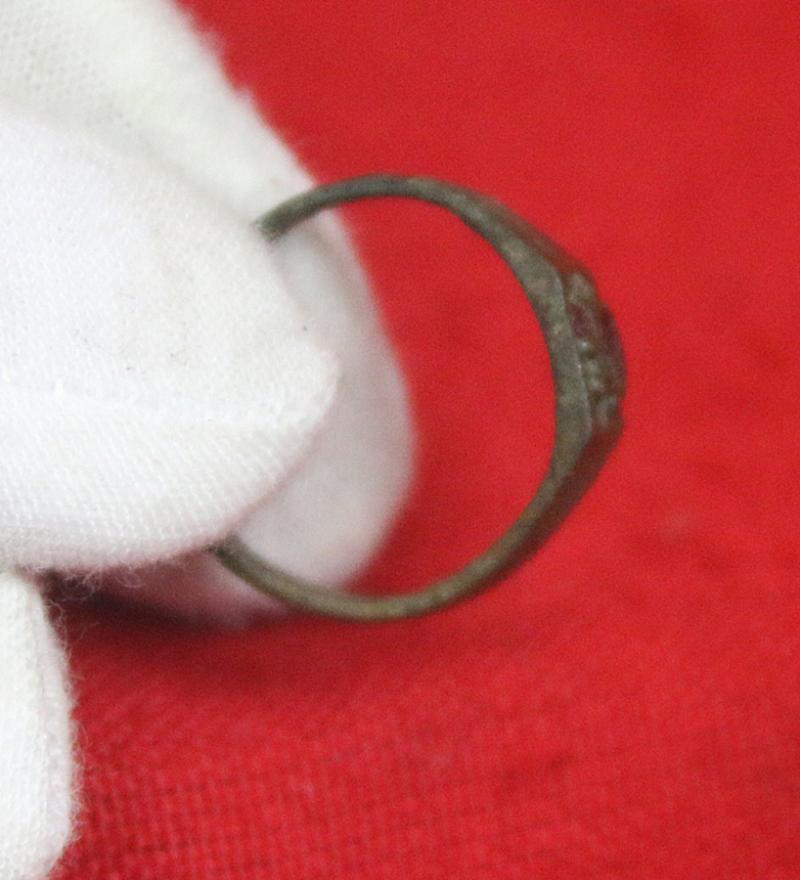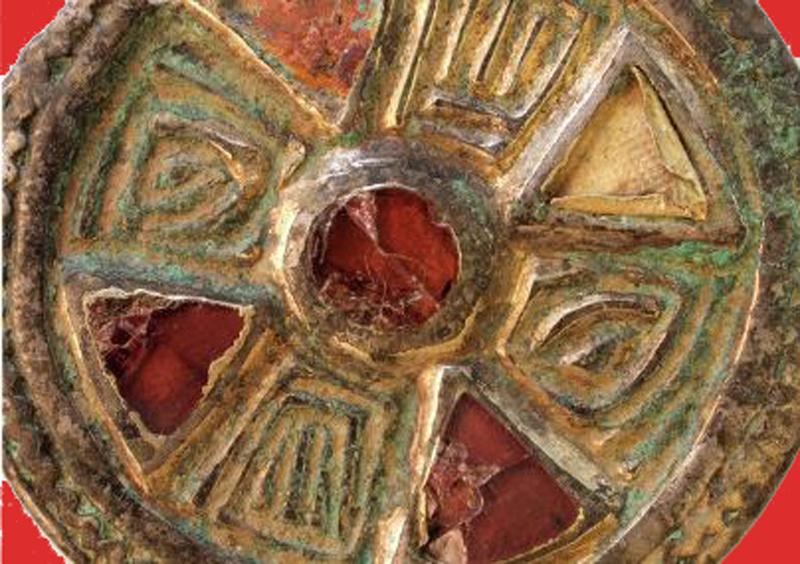A Superb & Rare Bronze Viking 'Sun-Wheel Ring of Thor'. The Sun-Wheel Is a Garnet Stone and The Area Around the Sun-Wheel Still Has Traces of Red Enamel, Circa 900 a.d.
The image of the wheel, a disc, or the sun-wheel symbolised the Viking heathen deity, the God of Thunder, Thor. It is the symbol of sky, and its relation to the earth, the earth itself (which was thought of as a disc resting on water), or the cosmos. In Norse religion, the wheel/disc/swastika became increasingly associated with Thor and was worn as an amulet and carved on tombstones or rings as both a symbol of continuity and luck.
Garnet and enamel inlaid jewels were far more utilised at the time by the Anglo Saxon's, in fact some of the most famed and beautiful jewels of the medieval period were indeed surviving Anglo Saxon garnet and gold buckles, clasps and jewels such as the 'Alfred Jewel' of King Alfred the Great. A gold, enamel, and semi precious stone inlaid aestal for reading of the bible.
Being inlaid with a garnet centre and an enamel face around Thor's Sun-wheel, which is unusual for Viking jewels, this may indicate it was made for a noble Viking by an Anglo Saxon English craftsman. But this can only be mere speculation, and an educated guess.
Although the function of the Alfred Jewel is not absolutely certain, it is believed to have been the handle or terminal for one of the precious "aestels" or staffs that Alfred the Great is recorded as having sent to each bishopric along with a copy of his translation of Pope Gregory the Great's book Pastoral Care. He wrote in his preface to the book:
"And I will send a copy to every bishop's see in my kingdom, and in each book there is an aestel of 50 mancusses and I command, in God's name, that no man take the staff from the book, nor the book from the church."
"Mancus" was a term used in early medieval Europe to denote either a gold coin, with a weight of gold of 4.25 grams. This made it worth about a month's wages for a skilled worker, such as a craftsman or a soldier. Of course this ring is a far more humble piece than an Alfred the Greats Bishop's Aestal, but and rare and beautiful survivor of the early Viking age none the less.
Viking raids began in England in the late 8th century, primarily on monasteries. The first monastery to be raided was in 793 at Lindisfarne, off the northeast coast, and the first recorded raid being at Portland, Dorset in 789; the Anglo-Saxon Chronicle described the Vikings as heathen men. Monasteries and minster churches were popular targets as they were wealthy and had valuable objects that were portable. The Anglo-Saxon Chronicle for the year 840 says that Æthelwulf of Wessex was defeated at Carhampton, Somerset, after 35 Viking ships had landed in the area.
According to Norse Sagas, in 865 the legendary Viking chief Ragnar Lodbrok fell into the hands of King Ælla of Northumbria. Ælla allegedly had Ragnar thrown into a snake pit. It is said that Ragnar's enraged sons, taking advantage of political instability in England, recruited the Great Heathen Army, which landed in the Kingdom of East Anglia that year. There is no proof that this legend has any basis in history; however, it is known that several of the Viking leaders grouped their bands together to form one great army that landed in the kingdom of East Anglia to start their attempted conquest of England in 866.
In 867 the great army went north and captured York, but Ælla, together with support from the other English kingdoms, attempted to retake the city. He was unsuccessful; the annals for the year says that Ælla was killed during the battle, but according to legend he was captured by the Vikings, who executed or Blood Eagle him as punishment for Ragnar's murder.
By the late 9th century, the Vikings had overrun most of the Anglo-Saxon kingdoms that constituted England at the time. However, Alfred the Great, king of Wessex, defeated the Vikings at the Battle of Edington in 878. The resultant treaty gave the Danes control of northern and eastern England, with Alfred and his successors controlling Wessex. But the whole of England was unified with Norway and Denmark in the eleventh century, during the reign of the Danish king Cnut the Great.
When Cnut died, however, he was succeeded by the Anglo-Saxon king Edward the Confessor. Edward managed to reign until his death in 1066, when he was succeeded by the powerful Earl of Wessex, Harold Godwinson. Harold's accession, however, was not unanimously embraced. To the north, the Norwegian king Harald Hardrada invaded England. In the late summer of 1066, the invaders sailed up the Ouse before advancing on York. Outside the city they defeated a northern English army led by Edwin, Earl of Mercia and his brother Morcar, Earl of Northumbria at the Battle of Fulford on 20 September. On hearing of the northern army's defeat Harold Godwinson marched the southern army north and met and defeated Hardrada at Stamford Bridge.
While Godwinson was busy up north, William the Bastard (later to be known as William the Conqueror), landed his army in Sussex, intent on seizing the throne of England. King Harold, Earl Godwin Godwinson returned from his successful battle in the north and camped, it is said, on his land at Isfield in Sussex now our family farm and travelled to Battle to greet the Norman William the Bastard, sadly for the Anglo Saxon's, he was defeated, and thus Britain entered in 1066 yet another radical change period in its history.
The last photo in the gallery is the central part of a museum exhibit of a recovered Anglo Saxon bronze and garnet disc brooch
As it is, as usual for the age, an enclosed setting, with little access for light refraction, the red in the stone can only be ideally seen in strong direct daylight or artificial torch light. Small size. 3/4 inch across.
Code: 24665
745.00 GBP

